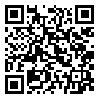BibTeX | RIS | EndNote | Medlars | ProCite | Reference Manager | RefWorks
Send citation to:
URL: http://ijhe.tums.ac.ir/article-1-144-en.html
Backgrounds and Objectives:Skin cancer is the most frequent malignancy in Iran. Exposure to the excessive ultraviolet radiation is an important factor in creating skin tumors. The purpose of this study is to determine how the ultraviolet index has been distributed in all townships throughout the country, to determine different kinds of skin cancer and to evaluate a geographical distribution of skin cancers with regard to the UV geographical distribution.
Materials and Methods: This study is ecologic, descriptive and analytical in nature. A total number of 6921 skin cancer cases registered at the Center for Disease Control of Iran in 2004 were thoroughly analyzed and UV data were collected from the world wide web. With the help of ArcGIS software and SPSS, the statistical analysis was done.
Results:The incidence rates were 10.13 for the total skin cancer, 7.53 for basal cell carcinoma, 1.79 for squamous cell carcinoma and 0.39 for malignant melanoma per 100000 population of Iran. The mean ultraviolet index differed from 9 in July to 3 in January. The correlation between the skin cancer incidence at the level of districts and ultraviolet index was not significantly observed.
Conclusion:Skin cancer is a public health problem in Iran. Further research in this regard would lead to skin cancer registration improvement and more understanding of different climatic, cultural and behavioral factors in developing skin tumors. With this knowledge the possibility of more effective prevention of the most prevalent cancer in Iran can be created.
Received: 2009/08/11 | Accepted: 2009/11/1 | Published: 2013/07/6
| Rights and Permissions | |
 |
This work is licensed under a Creative Commons Attribution-NonCommercial 4.0 International License. |





